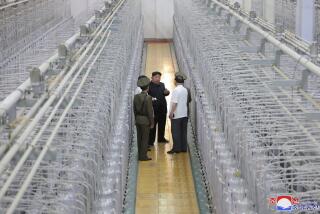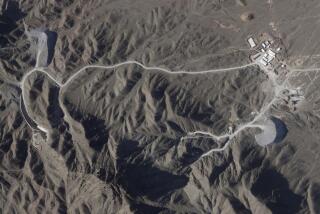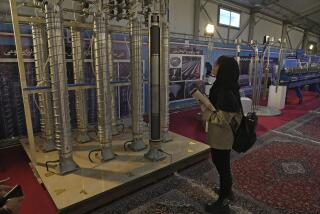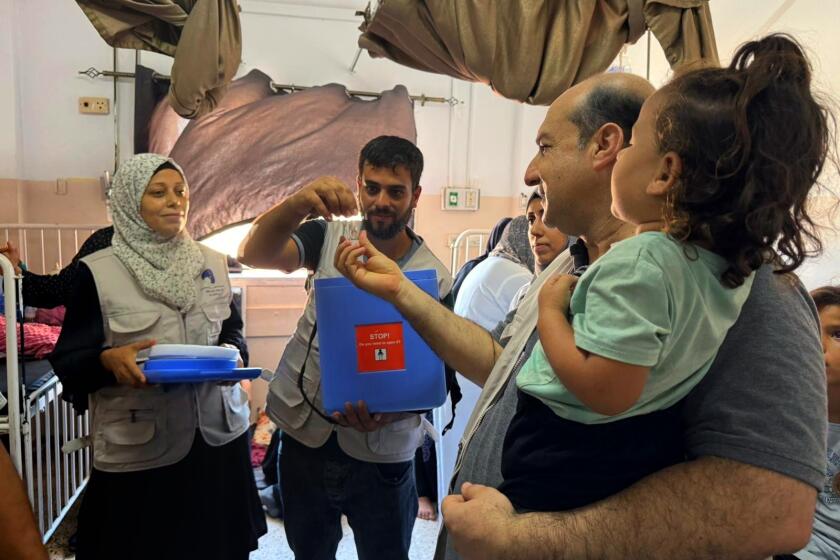Iran President Leads Tour of Atomic Plants
NATANZ, Iran — Iranian President Mohammad Khatami took a group of journalists Wednesday on an unprecedented visit into a formerly secret underground nuclear plant that Washington wants dismantled.
The tour of the Natanz facility and another nuclear plant in Isfahan was intended to show that Iran was not breaking its promise to suspend its uranium enrichment program, which Tehran says is aimed only at generating electricity. Western countries fear that Iran could produce nuclear bombs.
The journalists were not shown any centrifuges used to enrich uranium or taken to a pilot enrichment facility at the Natanz plant that contains dozens of the machines.
Iranian officials said the main enrichment facility at Natanz, 150 miles south of Tehran, was built more than 54 feet below ground because of “security problems.”
Defense experts said the placement so deep was a precaution against possible aerial attack by the United States or Israel, which have promised to stop Iran from acquiring nuclear arms.
Approaching the complex, ringed by arid mountains, journalists counted at least 10 antiaircraft batteries.
About 30 local and foreign journalists were shown a building two levels below ground where a vast empty hall was described as a room to house 50,000 centrifuges.
The centrifuges have been idled pending Iran’s discussions on the future of its nuclear program with the European Union. But Khatami made clear that Tehran intended to resume using them.
Khatami said Iran would “definitely” proceed with enrichment but intended to reach a deal in negotiations with the EU and the International Atomic Energy Agency, the United Nations’ nuclear monitor.
The EU wants Iran to permanently scrap nuclear fuel work at Natanz and elsewhere in return for assistance with developing nuclear energy and other economic and security cooperation.
Reporters were allowed to photograph and film the complex and were later shown parts of the atomic facility in the central city of Isfahan, about 60 miles farther south.
Sensitive fuel work has also been frozen at the Isfahan plant, which is designed to prepare uranium gas for Natanz.
Centrifuges purify uranium hexafluoride gas into reactor or bomb fuel by spinning at high speeds. Low-grade enriched uranium is used in atomic power plants, but highly enriched uranium can be used in bombs.
Although U.N. inspectors now regularly visit Iran’s atomic facilities and have found no proof of nuclear weapons production, they have often rebuked Tehran for concealing key information and activities.
U.S. State Department spokesman Adam Ereli said that if Iran wanted to allay international concerns, it would let U.N. inspectors enter what he called suspicious sites and interview key officials associated with the plants.
“The point here is that if there is a commitment to transparency, there are real, effective, meaningful ways to demonstrate that commitment, beyond a staged media event,” Ereli said.
More to Read
Sign up for Essential California
The most important California stories and recommendations in your inbox every morning.
You may occasionally receive promotional content from the Los Angeles Times.









